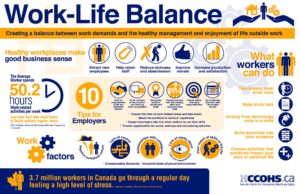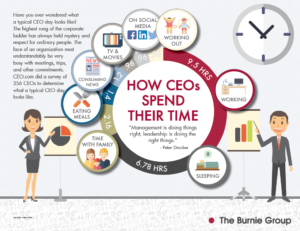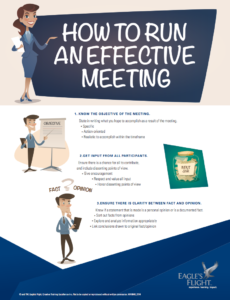I’m a logical pragmatist operations focused CEO, I’m also a woo-woo hippie who likes to be barefoot and meditate in nature. Now that we got that clear, let’s talk about time.
My Buddhist mentor priest Yasuhiku Kimora told me something that changed my life forever:
“Purpose is not something we have. It’s who we are as a cosmic destiny.”
I realised at this moment, all we are here to do is Do What We Love because it’s who we are as eternal beings. (enter the woo-woo)
How’s that for a crazy idea?
Notice your mind saying: “If we only do what we love we wouldn’t be successful.”
Now hear me out, and hear those limiting thoughts in your mind.
Here is the pragmatic way this plays out for you as a CEO or leader:
- Create your life and business so you only do what you love.
- Hire and create systems for others to do the things they love that you don’t love.
- Notice where your emotions and thoughts say this isn’t possible and shift them.
- Create a situation where this is possible through revenue, financing, systems automation, culture, and on.
We’re not here to grind and give away our life for something we don’t align with.
We’re here to be in love with the moments we are living.
Once I realised this, I started to live my life as my authentic self and channel my energy and passion into what I love that has a positive impact on others.
One choice I made is to run my companies while living in Europe during the summer and Latin America in the winter. Now I’m not talking about being a freelancer, I’m talking about team members, meetings, growth, all from home in a distributed and well-connected company.
I didn’t want to just live in one place… I wanted to live in all these places.
This is why I have the mantra:
I do what I want, when I want, wherever I want, with whomever I want.
Because when I do what I want, my life and business expand exponentially and yours can as well.

The above image breaks down some simple guidelines you can share with your team members to help them increase their peace and presence levels and enjoy their life outside of work.
The knock-on impact of these simple changes are:
- Increase in productivity and job satisfaction.
- Increased team member retention.
- Higher morale.
- Elevated company culture.
We just shift some beliefs you may have around time and freedom which is exactly what we’re going to do today.
It all starts by asking yourself this question.
How do I want to feel and what do I want to do with that feeling?
Take a moment now to contemplate and meditate on that. Close your eyes and visualize how you want to feel and how you want your life and business to look.
If you can visualize it, we can make it so. And notice if you aren’t sure? That just takes practice.
I was told I would lose the ability to have free-flowing creativity and true presence to enjoy life if I tried to build all these companies whilst travelling the world.
I did it though and did so through the structure.
“Whaaaaat….”
Yep, the structure creates freedom, my friend.
What Is Time Freedom?
Time freedom is an incredible feeling and we all deserve to experience it.
Let me just take things back a moment because time freedom can be summed up in one sentence.
Time Freedom Is Our Relationship To Time
When I was 29 I sold 2 companies for 7 figures and I had no reason to feel stressed, overworked and anxious. I still did though to some extent.
Turns out it wasn’t my lack of time causing the problem, it was my mindset around time that was creating my feelings of stress and anxiety.
The beliefs I adopted growing up, the beliefs society gave me, my conditioning, what my teachers told me and the environments I spent time in creating my perception of time.
That’s it’s scarce
Life is short
You can’t only do what you want
You are judged by your accomplishments
Etc.
The case might be the same for you.
And here’s the great part.
Our perception of time isn’t fixed. We can change it which is great because it’s a pivotal part in your creating the life you want for yourself.
More often than not, we think we don’t have enough time to do all the things we want.
Another key aspect of creating time freedom is our relationship to the past, present and future.
Too often we find ourselves replaying the past, fearing the future and therefore not present in the present. When I started to reflect on the past and become more fond of it, I was able to enjoy the present and be excited about the future.
The History Of Time
Most of our time units are arbitrary, except for the year, the lunar month and the day, which all have their discovery rooted in observable phenomenon, AKA science.
For example, at the beginning of time creation, we considered a “day” to be when the sun came up to when the sun went down. A month was tracked by the moon, which has clearly observable cycles, and a year was able to be measured as 365 days once humans started tracking the sun instead of the moon alone.
The sun has specific days marking the passing of time, known as solstices and equinoxes, and those days became known early on as days of magic or holy days. Civilization revolved around this way of marking time.
Once we had the 365-day year, many cultures began dividing that into 12 30-day periods, coming from the Babylonians, and just had 5 days left over. The tradition of starting a year with January came from the Romans, who named January after the god Janus, who was a two-faced deity facing both the past and the future. A 7-day week was also a human invention. Different cultures tracked their weeks in different increments, 5, 8, 10, etc.
The 7-day week eventually became common because there were seven heavenly bodies visible to the naked eye, and the sky was incredibly important to early civilizations, tracking things, time, weather, and more. Each day represented one of these seven heavenly objects:
- Monday (the Moon)
- Tuesday (Mars, in latin countries: marte)
- Wednesday (Mercury: miércoles)
- Thursday (Jupiter: jueves)
- Friday (Venus: viernes)
- Saturday (Saturn: sábado)
- Sunday (the Sun, domingo, which is a name derived from Dominus, the Lord’s day).
The 4 Day Workweek
With the global pandemic shifting our relationship with work and the way it’s conducted, our eyes have been opened to a more flexible way of working.
Now the floodgates are open for flexible working, the 4-day workweek is a new innovative way of working being trialled by some workplaces.
The way it works is team members do 10 hour days over 4 days and then have 3 days off.
Having this more condensed work period gives team members another day off which obviously contributes to improved work-life balance and a happier workforce is a more productive workforce.
Microsoft tested the 4-day workweek in Japan for a month and found productivity increased by 40%.
Other benefits of a 4-day workweek:
- Easier to attract and retain top talent.
- You may reduce costs by reducing overheads like rent and electricity.
- Can promote gender equality by allowing working mums to get a job that works around childcare.
For a more in-depth breakdown of the 4-day workweek, head over to this article.
The Perception Of Time
Did you know that animals perceive time differently than humans? Flies perceive the world as moving about 7 times slower than humans, and leatherback sea turtles perceive time about 2.5 time faster than a human does.
The relative perception of time for a species depends on its “critical flicker fusion frequency,” which is the point at which the flashes seem to merge together, so that a light source appears constant.
Scientists found that flies could detect light flickering up to four times faster than humans can. Flies avoid being swatted by watching time pass slowly compared to us trying to hit it.
Basically, the smaller an animal is, and the faster its metabolic rate, the slower time passes for them.
So what do you take from this? I took that time is:
- A tool
- An agreement
- A belief
- A blessing
- Powerful
This shows how time and our perception of time has been crafted to help us have meaning and structure in our lives. And this is a beautiful tool. However, let me ask you: Are you creating time or is your perception of time holding you back?
Everywhere we go there are clocks and calendars to remind us that we only have a certain amount of time – and it’s running out! Now this isn’t necessarily a bad thing, it’s just our relationship to time doesn’t always feel good. This is where the limiting beliefs come into play.
What Does The Data Say About Our Relationship To The Construct Of Time
- CEOs work on average 9.7 hours a day and an average of 62.5 hours a week.
- 72% of a typical CEOs workweek is spent in meetings.
- According to research published in the Harvard Business Review, “when leaders actively support more sustainable ways of working in the four dimensions [physical, emotional, mental, and spiritual], the result is a significant positive impact on employees’ engagement, stress levels, retention, and job satisfaction.” In other words, when you, as CEO, are able to lead a balanced lifestyle, so are your employees.
What this data shows us is that the average CEO still has long working days and that this ‘culture’ is passed down to team members who in turn feel they need to work long days.
The image below shows a visual breakdown of how a CEO spends their time.

If you, as the CEO and leader of your company, choose to shift your relationship with time, focus more on optimizing life balance then your team members will do the same.
The result;
- Better levels of efficiency and productivity.
- Lower levels of stress, sickness and absence.
- A more motivated and passionate working environment.
You see, time freedom starts with you but the knock-on benefits spread through your company.
Time Creation Experts
Leo Babauta is a vegan, fitness enthusiast and creator of Zen habits.
Zen habits is about finding simplicity and mindfulness in the daily chaos of our lives. It’s designed to help you find your focus and create something amazing. If you want to get Zen Habits in your inbox, head to this link and enter your email.
Laura Vanderkam is the author of I know how she does it and What the most successful people do for Breakfast. She encourages professionals to imagine their performance reviews a year in advance and recommends they define 3-5 things they want to achieve and reverse plan their year from there.
You can find her on twitter.
Dandapani is a Hindu priest, entrepreneur and former monk who helps fellow entrepreneurs understand and leverage their mind so that they can achieve their best. His clients include Nike, Trivago, Bloomberg and Sprinklr. He has a TED talk on concentration with over a million views.
What does a misalignment with time look like?
The chances are if you’re experiencing feelings centered around scarcity and fear then there’s a potential misalignment with time.
Remember, we can choose what we want to do and what we want to feel.
Life is about enjoying both the journey and the destination. If you’re enjoying neither, then there’s a misalignment pattern happening.
After spending 7 years hustling, grinding and getting stressed up to my eyeballs and still not feeling the way I wanted to feel at the end of it, I realized feeling good really is the key every single day.
When we focus on feeling good we have a greater experience of time, we attract more goodness into our lives, are more present and love being connected to what we’re doing, who we’re with and our surroundings.
Feelings & Beliefs
Before we move onto the action steps we can introduce to help shift our relationship to time, let’s define the feelings and beliefs we can let go of so we start focusing on feeling good.
UNDESIRED FEELINGS
- Failure
- Anxiety
- Stress
- Limited
- Self-doubt
UNDESIRED BELIEFS
- When I fail, nobody loves me.
- We aren’t systemizing tasks, projects and calendar properly and it makes me anxious.
- We aren’t completing initiatives according to timelines and it’s stressful.
- Spending time doing only what we love limits the company’s potential for success.
- I doubt we can have time freedom and meet our goals.
Close your eyes. Take a deep breath and let go of any of these feelings and beliefs you no longer want to hold on to.
Let’s go through the feelings and beliefs you can adopt to become a time creation ninja.
DESIRED FEELINGS
- Inspired
- Confident
- Accomplished
- Forgiving
- Productive
DESIRED BELIEFS
- The work we do inspires us and we love doing it.
- We confidently complete initiatives according to timelines.
- We accomplish great things through life balance.
- When we make mistakes we forgive ourselves and improve the systems.
- We are productive and always do what’s most impactful in the moment.
Action Steps To Shift Our Relationship To Time
STEP 1 ] Create your calendar daily and weekly to make time to do the things you enjoy.
Write a list of all the things that make you happy and put them in your calendar on a recurring basis to make time to do them.
Check out this article on 20 ways to use Google Calendar to optimise your day.
Optimizing your google calendar can simplify the planning process behind getting things done.
By allocating time to the things that matter as well as the tasks required in the day to day running of your company, you can be held accountable to a degree of self-love without neglecting your company duties.
STEP 2] Optimize meeting agendas.
As covered in the data section of this content, 72% of a typical CEOs working week is spent in meetings.
By creating agendas for each meeting you take part in, you can ensure you stay on topic, the relevant areas are discussed and rabbit holes aren’t ventured down.
This can help reduce the duration of meetings and potentially reduce the number of meetings you have on your schedule.
After all, structure creates freedom.
The step by step process we implement at Lifestyle Perfected when creating meetings is the following:
- Assign a category. For example; Prospect meeting, client meeting, team meeting, partner meeting, internal creation, internal meetings etc.
- Naming the meeting.
- Define the frequency of scheduling ie. how many days a week or a month does it need to happen.
- Allocate time slots for it to take place.
- Create a recommended agenda.
- Share agenda with the relevant meeting members to discuss and refine it.
- Ensure the finalised agenda is in each meeting event and visible throughout the meeting.

STEP 3] Be empowered and in flow with your time.
You can achieve this by enrolling on the Lifestyle Perfected Time Creation Mastery Course.
Learn how to align, plan and track your time.
One of our CEO clients Avnar Roash had this to say about his time working with Lifestyle Perfected:
When I started the Lifestyle Perfected program I was “Grinding Hard”, long hours at the office, stressed and unable to take time to enjoy myself the way I wanted.
After doing the Lifestyle Perfected Program I have reduced my time to exactly how much time I’m wanting to spend doing what I want. I’ve reduced my ENTIRE company’s workweek to 35 hours AND still exceeding my multi-million dollar goals. Most importantly I feel free, peaceful, creative and am having fun.
If you’d like a complimentary consultation on your time creation or another area of business to elevate the alignment within your company, reply to this email or alternatively, you can see our programs for CEOs and for teams here.
We’re also excited to invite you to apply to CEO Circle. A group for CEOs to elevate emotional intelligence, increase impact and legacy wealth. If you are CEO and/or a founder with $1 million or more in revenue or assets apply here.
Sending you love,
Nadav
& the Lifestyle Perfected team

